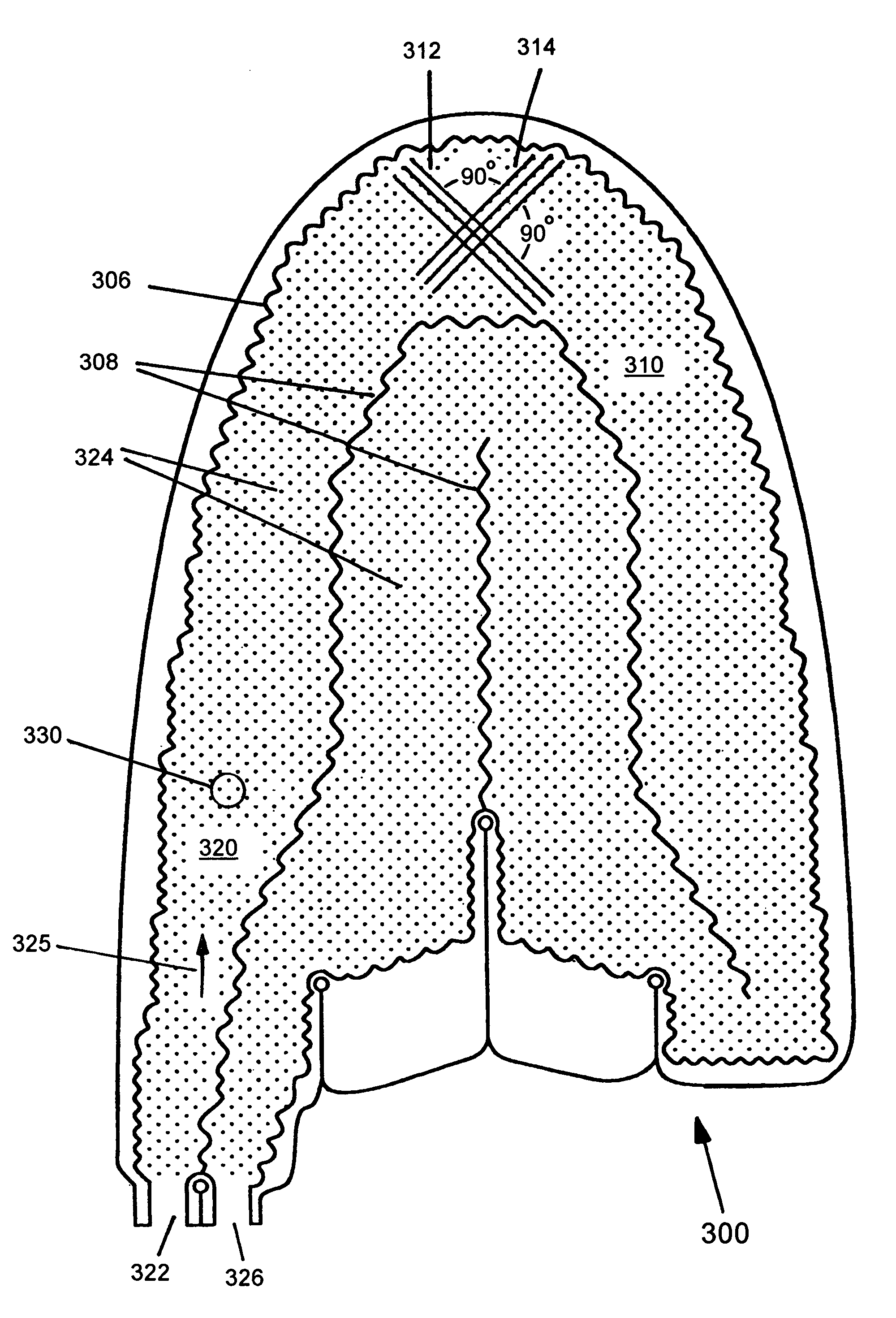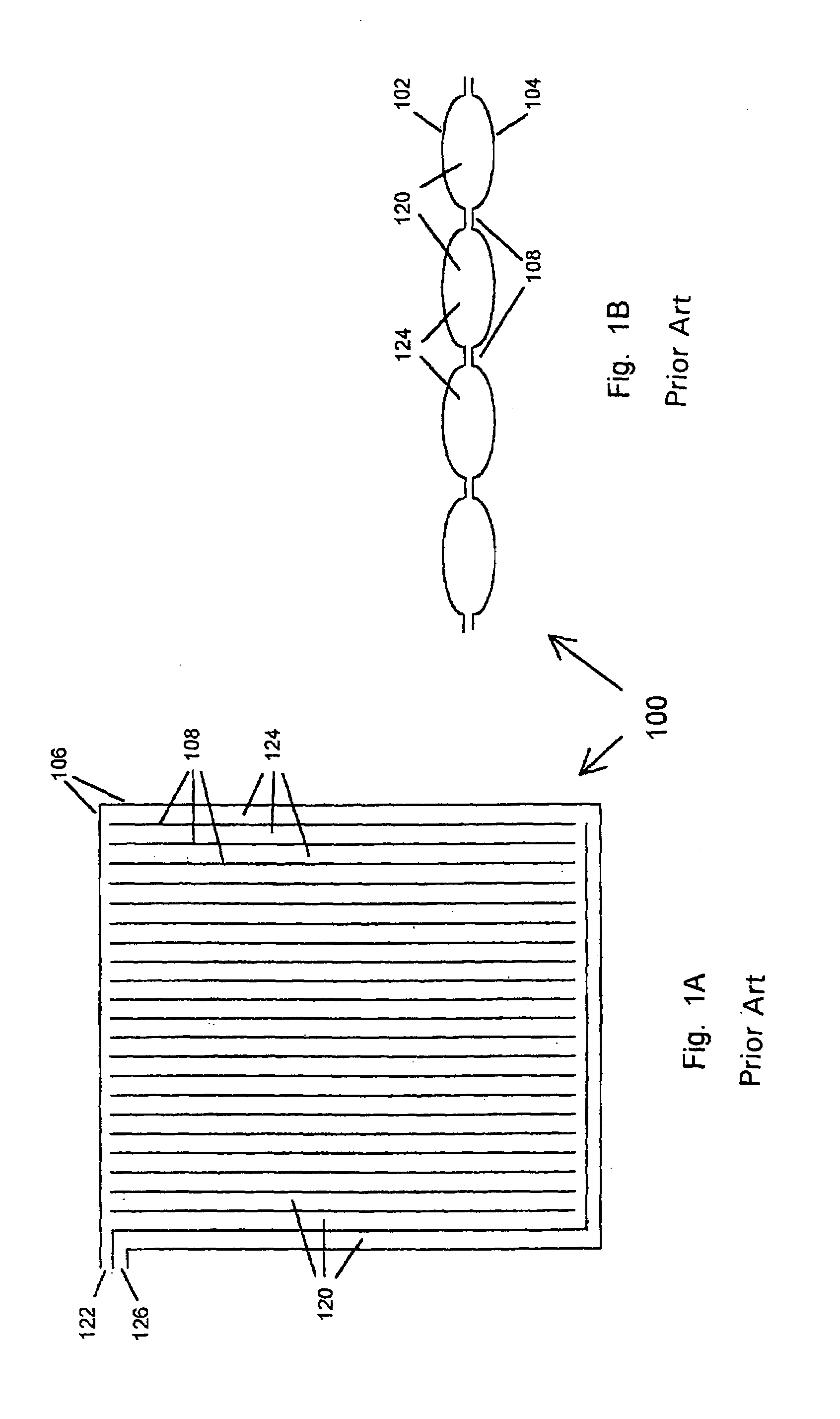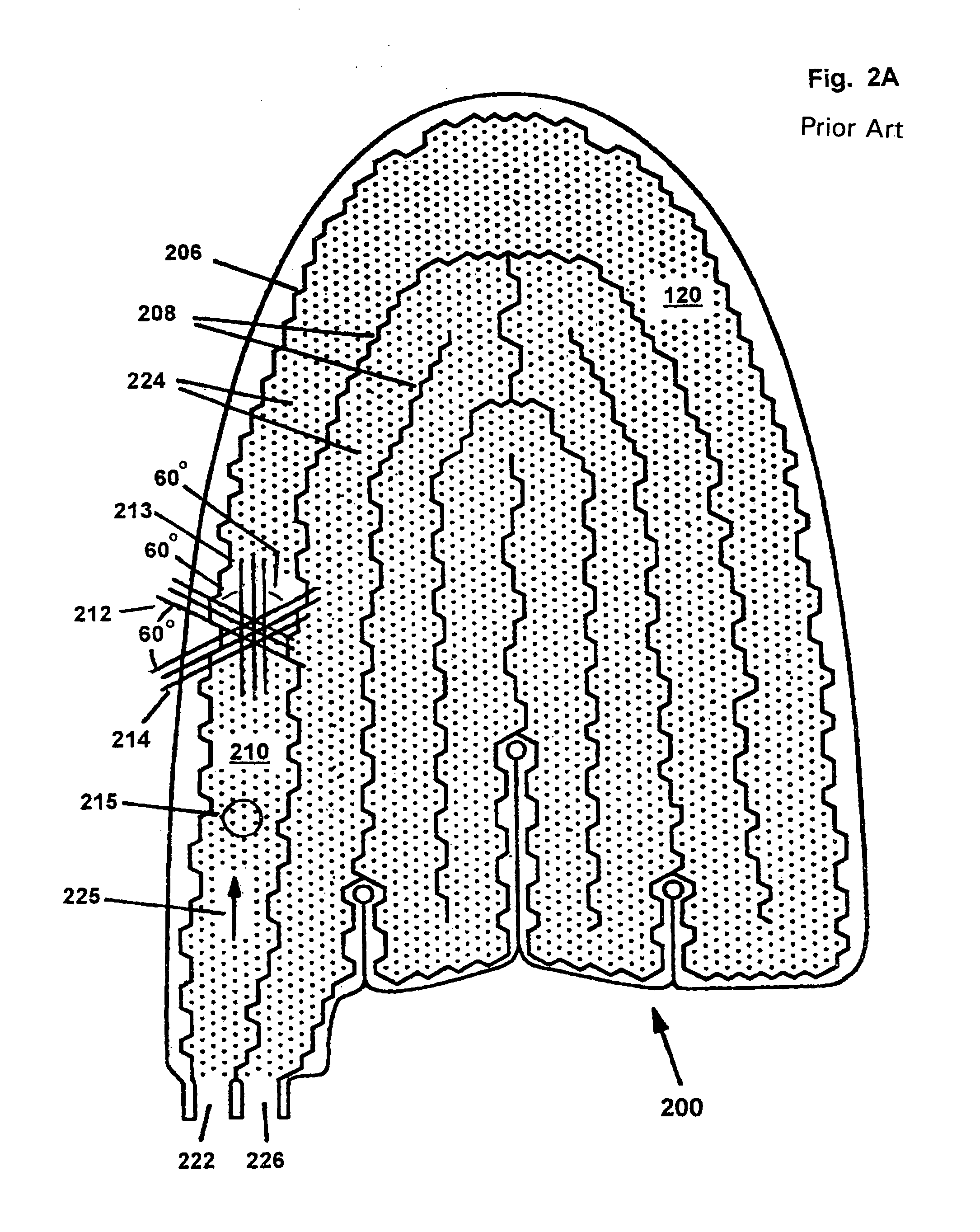Compliant heat exchange panel
a heat exchange panel and heat exchange technology, applied in the field of heat exchangers, can solve the problems of increasing the cost of active heat exchange systems, increasing the difficulty of controlling the dimensions of elastic materials, and changing the panel or the medium, so as to reduce buckling, reduce the effect of panel thickness, and increase the area of thermal conta
- Summary
- Abstract
- Description
- Claims
- Application Information
AI Technical Summary
Benefits of technology
Problems solved by technology
Method used
Image
Examples
Embodiment Construction
[0024]FIGS. 3A and 3B are a plan and a cross-sectional diagram, respectively, of a heat exchange panel of the present invention and referred to by a reference number 300. The heat exchange panel 300 includes a first layer 302 and a second layer 304. The first layer 302 and the second layer 304, which layers are conformable to complex shapes are sealed together at a common border 306, at fences 308, and at dots of a dot matrix 310. Preferably, the common border 306 is near to the perimeters of the first layer 302 and the second layer 304 but it does not need to be at the exact outside of the first layer 302 or the second layer 304. The dot matrix 310 is organized into first imaginary parallel lines 312 and second imaginary parallel lines 314 for connecting each of the dots to the nearest adjacent dots of the dot matrix 310. The lines 312 and 314 are approximately perpendicular within a range ±20°. In contrast, in the prior art panel 200 (FIGS. 2A–B) the lines 212–14 cross at angles o...
PUM
| Property | Measurement | Unit |
|---|---|---|
| angle | aaaaa | aaaaa |
| angle | aaaaa | aaaaa |
| angles | aaaaa | aaaaa |
Abstract
Description
Claims
Application Information
 Login to View More
Login to View More - R&D
- Intellectual Property
- Life Sciences
- Materials
- Tech Scout
- Unparalleled Data Quality
- Higher Quality Content
- 60% Fewer Hallucinations
Browse by: Latest US Patents, China's latest patents, Technical Efficacy Thesaurus, Application Domain, Technology Topic, Popular Technical Reports.
© 2025 PatSnap. All rights reserved.Legal|Privacy policy|Modern Slavery Act Transparency Statement|Sitemap|About US| Contact US: help@patsnap.com



